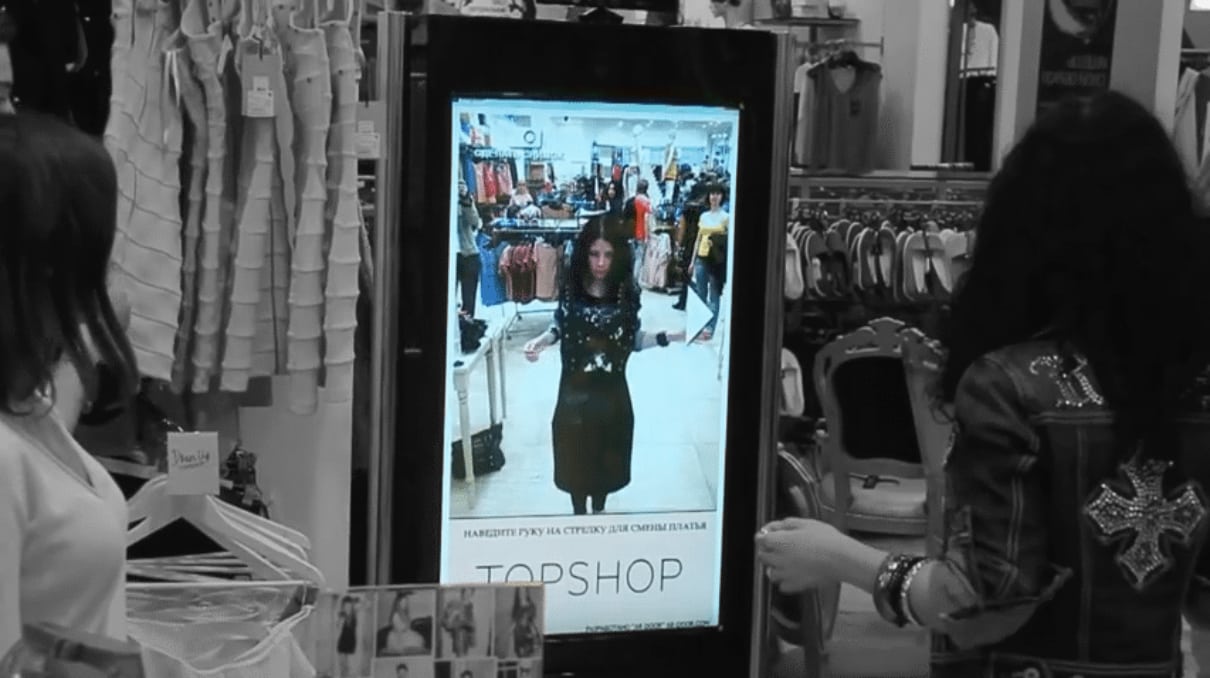9 Examples of Using Augmented Reality in Marketing
To basically describe the evolution of marketing goes like this: it evolves as technology evolves. Nowadays, when we think of marketing, the term digital immediately comes to mind. Marketing experts are aware of the fact that the digital environment imposes new trends, and they have to keep pace with those trends. Augmented reality, in particular, is a trend that no one can underestimate.
This technology is officially no longer in its infancy. Many brands are using it quite successfully in their advertising campaigns. It’s time to start considering AR as a standard in modern marketing. To give you an idea of the way augmented reality is changing the world of advertising, here are 9 examples of campaigns based on that technology:
1. Coca-Cola’s Chinese New Year AR Campaign
Can any brand compete with Coca-Cola’s holiday-themed campaigns? Hardly! Due to the clever advertising over the decades, Coca-Cola is the drink we associate to celebrations.
With its 2018 campaign for Chinese New Year, Coca-Cola took things to the next level. To bring the idea to life, the brand paired with Alipay, a popular Chinese mobile payment app. Each bottle of Coca-Cola featured cute clay doll characters – the protagonists of the campaign. Those images were scannable, and they unlocked Alipay’s AR function, blending into the real-world surroundings. At the end of the AR show, the characters delivered a red envelope with a small monetary prize for the user.
2. Pepsi – the AR Bus Stop Display
When it comes to Coca-Cola and Pepsi, the competition is real. Who’s the leader? That’s a matter of preference. The fact is that both these brands are exceptional in their approach to advertising. The way Pepsi used AR at a London bus stop is impressive, to say the least. The most surprising detail is that this campaign started in 2014 when augmented reality was not that widely used in the world of marketing. The bus stop made waiting interesting for the users of public transport. The AR-enabled display showed a meteor crashing, a tiger chasing people on the street, and an alien tentacle grabbing them.
3. Topshop’s VR Dressing Room
So you’re walking across the city when suddenly, you see a great piece of clothing on a window display, but the thought of trying things on is off-putting. Topshop found a way to solve that!
This is an example of using AR technology back in 2011, so it wasn’t as advanced as it could be today. Nevertheless, Topshop’s AR dressing room in Moscow is still one of the best examples of using this type of technology in retail. You might be wondering: what does this example have to do with marketing, anyway?
AR Door, the agency that created the virtual fitting room for Topshop, launched a pretty nice campaign to promote the feature.
4. Acura Live-Streamed AR Race
“What a Race: The World’s First Live Augmented Reality Race” – that was a trending headline on Facebook about a year ago. Acura went live to showcase its 2018 TLX sedan, but this wasn’t simple live streaming. During the event, four influencers competed in a race powered by AR technology.
A new AR course was triggered by each lap, so the racers had to defend their brand new Acuras from surprising obstacles.
221K views for live streaming is not bad, don’t you think?
5. IKEA’s AR Catalogue
This is possibly the most well-known example of AR in marketing. IKEA has always been known for its state-of-the-art catalogs, but the brand outdid itself in 2013. The AR-powered catalog enabled the shoppers to visualize how the furniture would look in their rooms.
Due to the fact that the app showcased the furniture in a proper ratio within the space, the users could get actual impressions about the new addition into their homes. In 2017, IKEA took things further: they launched a sophisticated AR app based on the same principle.
6. Dutch Lady: The Flying Farm
Dutch Lady is a Vietnamese brand, which produces dairy beverages. Its overall marketing approach is great, especially because the company gives away collectible toys with its products. In 2016, they gave new life to those toys. The brand launched an app that transported children into a realistic world of a cute cow and a Dutch farm boy.
The target of the campaign was 6% volume sales uplift. Pretty ambitious, right? Get this: they actually achieved a 19% increase in volume sales. Now that’s what we call a successful use of augmented reality in marketing. During the campaign, the app was downloaded more than 40,000 times.
7. Stockholm Is Your Canvas
Stockholm is a very artistic city, so it’s not difficult to get people interested in Art Week. The 2014 campaign “Stockholm Is Your Canvas” however, surpassed all expectations. Through the app, anyone could submit their art to the project, so it would be featured in the AR-powered catalog. When the app user pointed the camera towards a symbol, they would see art come to life.
8. Madame Tussauds AR Guidebook
This is a more recent example, so it’s naturally more advanced. Blippar, a company that specializes in augmented reality, worked on the development for the latest Madame Tussauds guidebook. All you need is an app and a guidebook, so you can bring its pages to life. Through an AR experience, you’ll see how the wax models were made and you’ll learn more about the process.
9. Uber AR Experience
Uber riders had an interesting experience at Zurich main station. They were taken into a world of wilderness, full of elephants, kangaroos, and tigers. The concept is pretty simple, but the technology behind the realization is quite advanced. The main thing is that Uber made the day for travelers, and that’s a nice way to be remembered as a brand.
Augmented Reality Marketing Is Getting Bigger By the Day. AR is no longer some new technology that brands are yet to experiment with. Marketers use it to get people’s attention, motivate to actions, and help make the right choice. With every example we have seen using AR, it’s time for everyone to hop on board and consider such an investment.











